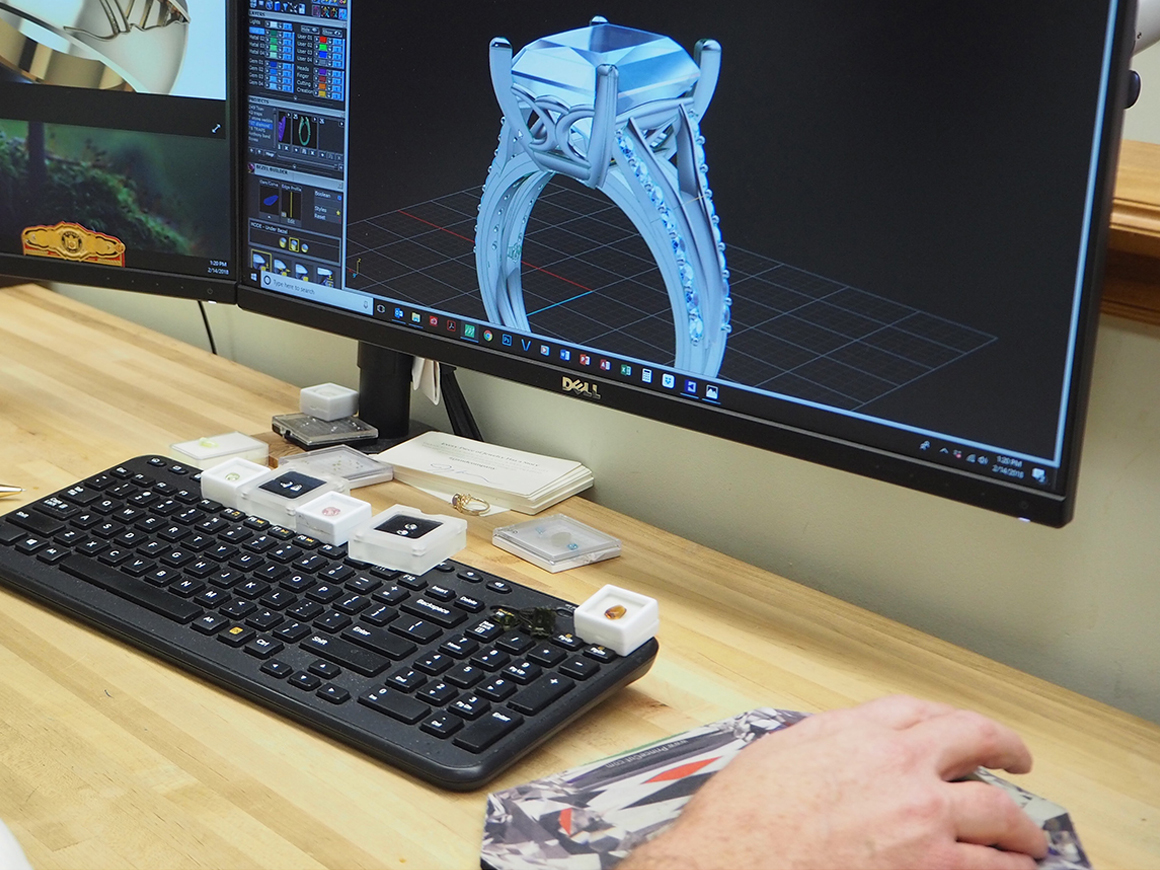There’s a lot to think about when selecting a ring. So much, in fact, that the actual setting of the ring may be easily overlooked. Still, the setting is one of the most important considerations because it does the important work of securing the gemstone to the jewelry. Keep in mind, however, that choosing a ring setting is about much more than simply securing the stone to the ring. You should think about how a specific ring setting will showcase your gemstone, and consider the impact it will have on the overall design and look of your ring.
Let’s talk about prong settings, which are by far the most common. A prong setting uses between three and six small, metal claws to hold the gemstone tightly in place. This type of setting is also less expensive than many other ring settings because it uses less metal and doesn’t take as much time to create.
Prong settings are an especially popular choice for solitaire engagement rings because so much of the diamond is exposed. This allows more light to pass through, and maximizes the diamond’s sparkle. And because more of the stone is exposed, you can easily clean the top, bottom and sides to keep it looking dazzling and new.
Different Types of Prong Settings
Deciding on a prong setting is just the first step, as there are also various types of prong settings suitable to different stones, cuts and designs. Prongs can be rounded, pointed, flat or V-shaped. Flat prongs are recommended for emerald-cut stones, while V-shaped prongs offer protection for the pointed ends of heart-, marquis- or pear-shaped stones.
Additionally, you will need to choose between a four- or six-prong setting, although one is not necessarily better than the other. Certain designs are better suited for four prongs, especially if you want a square look. Smaller stones are often better displayed in a four-prong setting because additional prongs cover up too much of the stone. Four prongs also make way for the most light, which maximizes the brilliance of the diamond. Nevertheless, six prongs may be better if you wish to emphasize the rounded shape of a diamond. Six prongs also offer a more secure setting and extra protection for the surface of larger stones.
Most people can wear a prong setting with no problems, but it’s important to consider the safety and durability of different types of prong settings. People with an active lifestyle, for example, may prefer a lower-set prong. At Jeff Johnson & Co., we have the experience and expertise to help you choose a ring setting that suits your taste and lifestyle. We can also inspect the prongs on your ring. Keep in mind that prongs should be inspected at least once a year to make sure they’re tightly secured to the ring—so your gem stays safe and secure in its setting.
Jeff Johnson & Co. is a full-service jeweler located in Upper Arlington, Ohio. We specialize in custom engagement rings, keepsakes for significant moments, and giving new life to family heirlooms. Our gemologists are trained by the Gemological Institute of America, and they work closely with each customer to ensure that we meet your vision and beyond. Stop by our showroom at 5025 Arlington Centre Blvd. (off Henderson Road), call 614-459-8890, or jjandcompany.com. You can also follow us on Facebook at Jeff Johnson & Co.
